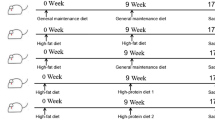Abstract
ALTHOUGH protein deficiency is probably the commonest form of malnutrition throughout the world, there is no means of assessing its severity in the living subject. One approach to this problem is by tissue analysis. Measurement of the protein content of tissues by itself is of little value, since significant changes do not seem to be found1. If, however, protein content is related to deoxynucleic acid, an index is obtained of the amount of protein per cell. By this method we have shown that there is a very severe loss of protein from the livers of malnourished infants on a protein-deficient diet2.
This is a preview of subscription content, access via your institution
Access options
Subscribe to this journal
Receive 51 print issues and online access
$199.00 per year
only $3.90 per issue
Buy this article
- Purchase on Springer Link
- Instant access to full article PDF
Prices may be subject to local taxes which are calculated during checkout
Similar content being viewed by others
References
Holmes, E. G., Jones, E. R., Lyle, Margaret, D., and Stanier, Margaret W., Brit. J. Nutr., 10, 198 (1956).
Waterlow, J. C., and Weisz, T., J. Clin. Invest., 35, 346 (1956).
Mendes, C. B., and Waterlow, J. C. (to be published).
Protein Malnutrition, Proc. Conf., convened in Jamaica by the Food and Agriculture Organization of the United Nations, the World Health Organization and the Josiah Macy, Jr. Foundation, edited by J. C. Waterlow (FAO, Home, 1955).
Hansen, J. D. L., and Jenkinson, V., S. Afr. J. Lab. Clin. Med., 2, 205 (1956).
Author information
Authors and Affiliations
Rights and permissions
About this article
Cite this article
WATERLOW, J., MENDES, C. Composition of Muscle in Malnourished Human Infants. Nature 180, 1361–1362 (1957). https://doi.org/10.1038/1801361a0
Issue Date:
DOI: https://doi.org/10.1038/1801361a0
Comments
By submitting a comment you agree to abide by our Terms and Community Guidelines. If you find something abusive or that does not comply with our terms or guidelines please flag it as inappropriate.



